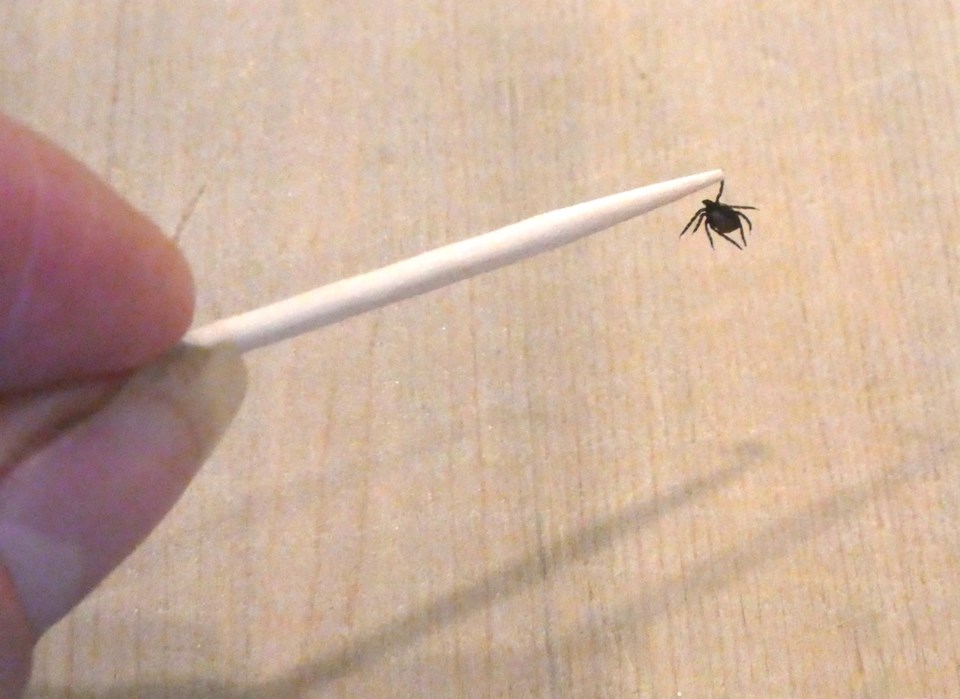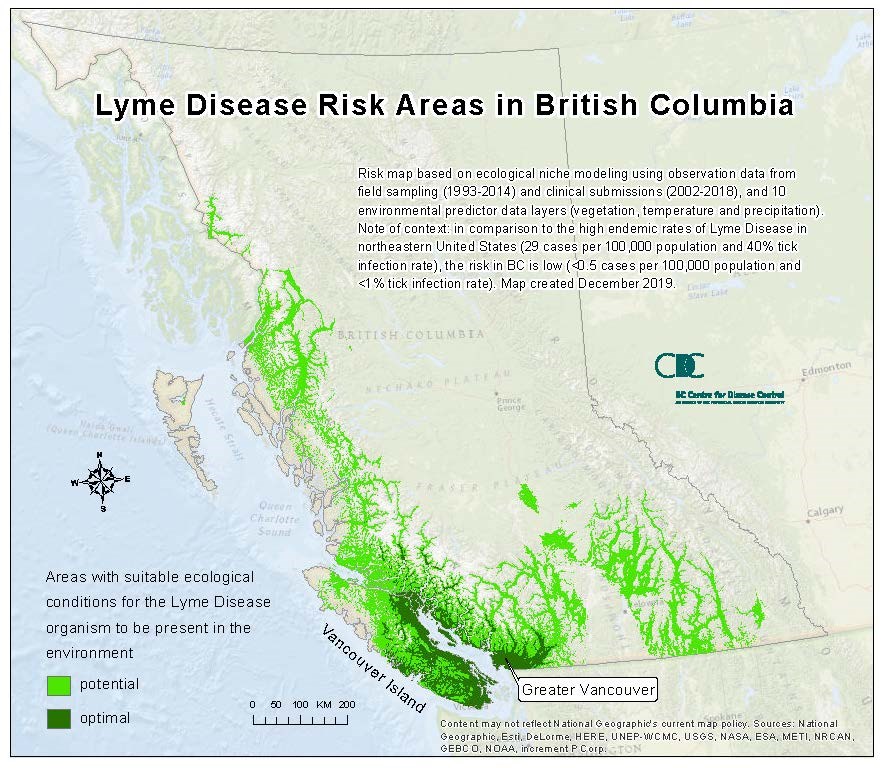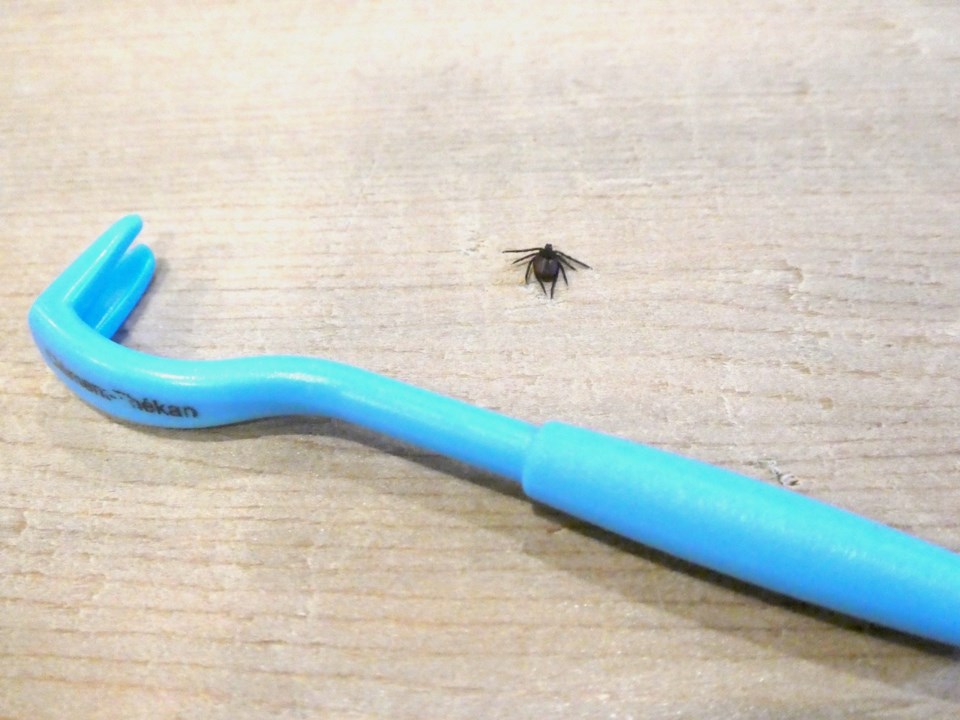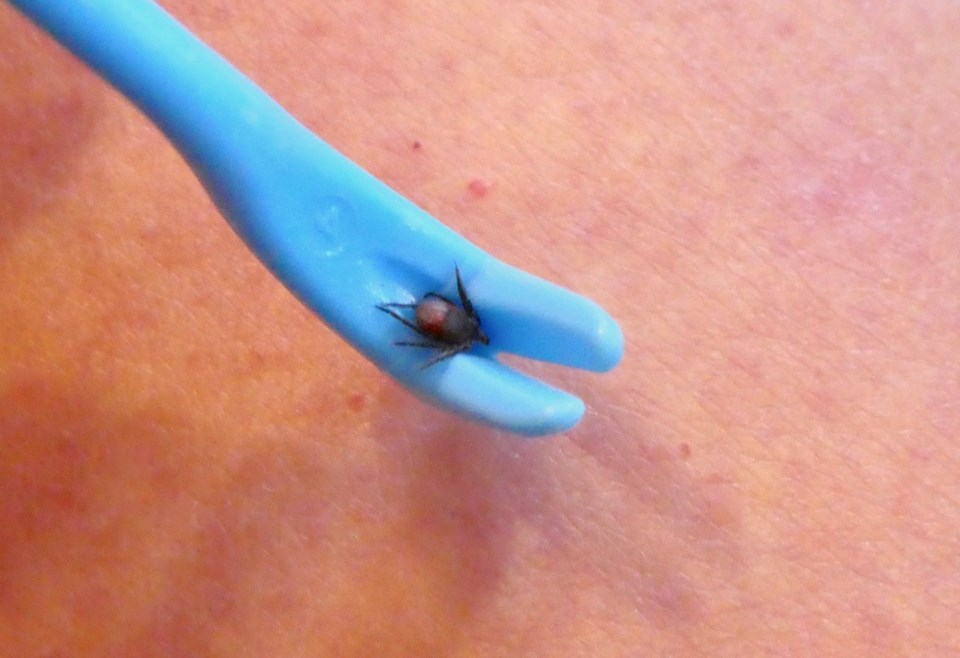For almost a year now, pandemic restrictions have pushed people to spend more time in the great outdoors. In my opinion, everyone could use a little more fresh air, green space and exposure to friendly forest critters. However, at least one critter doesn’t seem quite so pleasant—the tick.
Many people have been surprised to see ticks active and feeding in January this year. In fact, ticks do live here year-round, and can be active any time the temperature is above freezing.
These tiny arachnids (yep, eight-legged arthropods, like spiders) are a type of mite that eats the blood of animals.
Where to find a tick
Contrary to popular belief, ticks do not live on or drop down from trees. They cannot jump or fly. They “quest” for hosts by sitting on tall grasses and underbrush with one pair of legs outstretched. As an animal (or person) walks by, the tick climbs onto its unsuspecting host, then buries its barbed mouth into the thinnest, most tender and moist skin it can find. This is why we often find ticks on our hairlines (as well as armpits and other more — ahem — delicate areas).
 Tiny claws on the tips of a tick’s legs help it grab onto its prey. By Jen Ritchie
Tiny claws on the tips of a tick’s legs help it grab onto its prey. By Jen RitchieTheir usual hosts in our neck of the woods, are deer, squirrels, rodents, birds, rabbits, horses, cattle, cats and dogs, and humans. Some ticks, like the winter tick (Dermacentor albipictus), only feed on one host per life cycle, only live one season and don’t feed on humans. Others, like the Rocky Mountain Wood Tick (Dermacentor andersoni), have complicated life cycles with multiple hosts over multiple years.
Only three of the 20+ ticks that live in B.C. feed on humans:
- The Rocky Mountain Wood Tick (Dermacentor andersoni), fortunately, is not found west of the Coast Range mountains. Thank goodness we don’t have to worry about this one here on Bowen!
- The Western Black-legged Tick (Ixodes pacificus) lives on Vancouver Island, the Gulf Islands, along the mainland coast up to Powell River, and along the Fraser River up to Boston Bar. These tiny red and black females (and even tinier black males) will feast on deer, cats and dogs, as well as humans.
- The Brown Dog Tick (Rhipicephalus sanguineus) is found all over B.C. and usually feeds on dogs, but also occasionally on humans. Check around your pet’s ears, neck, and toes for these reddish-brown pests, who grow engorged with blood then drop off to lay their eggs (often inside your house!)
Why worry about ticks?
Many carry micro-organisms and neurotoxins that cause disease, paralysis and (rarely) even death.
According to the BC CDC, “most ticks that carry lyme disease are found in southwestern B.C., including Vancouver Island, the Gulf Islands, the Sunshine Coast, Greater Vancouver, and the Fraser Valley.” See the Lyme disease risk areas map for more information.
 Lyme disease risk areas in British Columbia, created in Dec. 2019. "Risk map based on ecological niche modeling using observation data from field sampling (1993-2014) and clinical submissions (2002-2018), and 10 environmental predictor data layers (vegetation, temperature and precipitation). Note of context: in comparison to the high endemic rates of Lyme Disease in northeaster United States (29 cases per 100,000 population and 40% tick infection rate), the risk in B.C. is low (<0.5 cases per 100,000 population and <1% tick infection rate)." By BC CDC
Lyme disease risk areas in British Columbia, created in Dec. 2019. "Risk map based on ecological niche modeling using observation data from field sampling (1993-2014) and clinical submissions (2002-2018), and 10 environmental predictor data layers (vegetation, temperature and precipitation). Note of context: in comparison to the high endemic rates of Lyme Disease in northeaster United States (29 cases per 100,000 population and 40% tick infection rate), the risk in B.C. is low (<0.5 cases per 100,000 population and <1% tick infection rate)." By BC CDC
The organism that causes lyme disease, Borrelia burgdorferi, has been found all over B.C., but mainly in Southwestern B.C.
Lyme infection doesn’t always cause a telltale “bulls-eye” rash, and many of the other dozen-plus tick-borne infections can also be symptom-less at first. Lyme and other infections can remain dormant for years or even decades, before causing a wide range of confusing symptoms over a long period of time (including fever, fatigue, vision problems, joint problems, muscle spasms, and symptoms that mimic MS).
So it’s always best to check in with your doctor if you’ve found a tick feeding on you: you may require antibiotics.
The positive side of ticks
With so many horrible consequences to having a tick population, it may seem inconceivable that this pest plays positive roles in the ecosystem.
How can ticks be beneficial? As part of a greater web of predator-prey relations, ticks can help control wild animal populations (as predators), just as they themselves provide sustenance to others (as prey).
Ticks are a plentiful food source for many reptiles, birds and amphibians, as well as for insects such as ants, ladybugs (they can eat 60+ ticks per day!), chiggers, wolf spiders and various beetles.
Various nematodes and fungi also feed on ticks. Metarhizium anisopliae is a fungus commonly found in forest floors in Southwest B.C. that penetrates the tick as it grows. Nematodes like Steinernema carpocapsae and Heterorhabditis bacteriophora inject bacteria into ticks pre-digesting and killing them within days.
Squirrels and chipmunks turn the tables on ticks: these animals are quite adept at removing ticks that try to feed on them, and eat them as a tasty snack.
On the other hand, deer and mice will host ticks without removing them—and potentially pass them on to humans and pets.
Check all over your body for ticks (yes, everywhere)
Ticks often walk around on their host for a while before burying into thinner moister skin, like the scalp, underarms, and undercarriage. So get your hiking buddy to check those hard-to-see places for you, and whether with a partner or alone, remember that a good hike often includes “butt stuff.” (Check your sensitive areas.)
 A simple plastic tool called a tick remover or tick twister (available at Cates Pharmacy) does the job much more easily and efficiently than tweezers. By Jen Ritchie
A simple plastic tool called a tick remover or tick twister (available at Cates Pharmacy) does the job much more easily and efficiently than tweezers. By Jen Ritchie
How can I protect myself while enjoying the outdoors?
- The best defense is a good offense: avoid tall grasses and bushy undergrowth while hiking, wear long sleeves and pants, and tuck your pants into your socks.
- Immediately after returning home, remove clothing into the laundry and do a tick check of your body.
- There are monthly anti-tick medications available for pets (unfortunately not for humans).
- Insecticides like permethrin sprayed on your clothing can protect you, and last on clothing for weeks, even through repeated washings.
- A simple plastic tool called a Tick Remover or Tick Twister (available at Cates Pharmacy) does the job much more easily and efficiently than tweezers.



